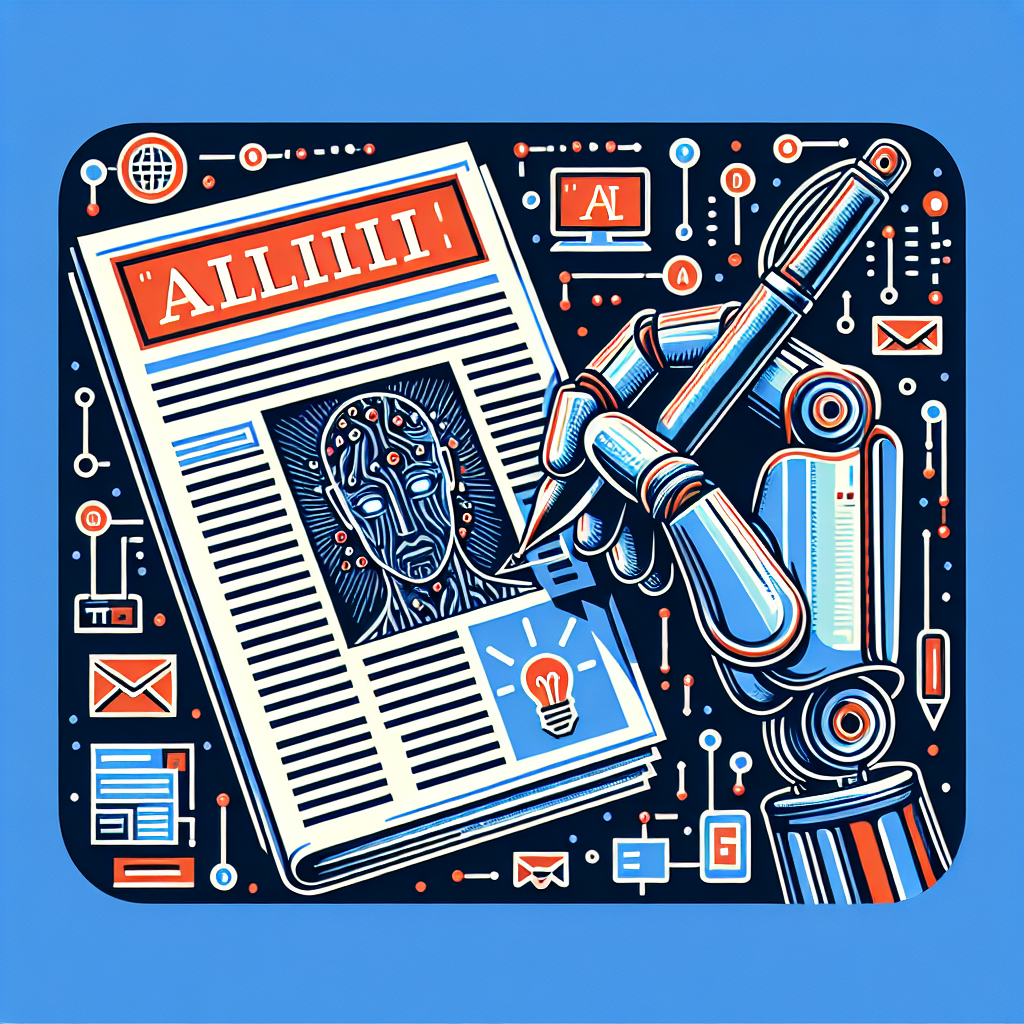The Risks of AI in Journalism: Impacts on Media Integrity
Artificial intelligence (AI) has been increasingly used in various industries, including journalism. AI technology has the potential to revolutionize the way news is gathered, reported, and consumed. However, the use of AI in journalism also comes with its own set of risks that can impact media integrity.
AI in journalism refers to the use of automated systems to assist in the creation of news stories, from gathering data and information to writing and editing articles. While AI can help journalists by automating repetitive tasks and providing insights from large datasets, it also raises concerns about bias, accuracy, and accountability.
One of the main risks of AI in journalism is the potential for bias in the algorithms used to generate news stories. AI systems are trained on large datasets of text and images, which can contain biases that are present in the data. If these biases are not properly addressed, they can be perpetuated in the news stories produced by AI systems, leading to inaccurate or misleading information being published.
Another risk of AI in journalism is the lack of transparency in how news stories are generated. AI systems can be complex and opaque, making it difficult for journalists and readers to understand how a particular story was produced. This lack of transparency can erode trust in the media and raise concerns about the reliability of AI-generated news.
Furthermore, the use of AI in journalism raises questions about accountability and ethical considerations. Who is responsible for the content produced by AI systems? How can journalists ensure that AI-generated stories meet ethical standards and uphold journalistic integrity? These are important questions that need to be addressed as AI technology continues to be integrated into newsrooms.
Despite these risks, AI also offers opportunities for journalists to enhance their reporting and storytelling capabilities. AI can help journalists sift through large amounts of data quickly, identify trends and patterns, and generate insights that may not be apparent through traditional reporting methods. By leveraging AI technology, journalists can improve the quality and efficiency of their work, ultimately benefiting both journalists and their audiences.
In order to mitigate the risks of AI in journalism and uphold media integrity, it is important for news organizations to implement best practices and guidelines for the use of AI technology. This includes ensuring that AI systems are transparent and explainable, addressing biases in algorithms, and establishing clear lines of accountability for AI-generated content. Additionally, journalists should be trained on how to use AI technology effectively and ethically, and should be aware of the limitations and potential pitfalls of AI in journalism.
Despite the challenges and risks associated with AI in journalism, the potential benefits of using AI technology in newsrooms are significant. By embracing AI and leveraging its capabilities, journalists can enhance their reporting, engage with audiences in new ways, and stay ahead of the rapidly evolving media landscape. However, it is crucial for news organizations to approach the use of AI in journalism with caution and to prioritize transparency, accountability, and ethical considerations in order to maintain media integrity and uphold the trust of their readers.
FAQs
Q: Can AI completely replace human journalists in the future?
A: While AI technology has the potential to automate certain aspects of journalism, such as data gathering and analysis, it is unlikely that AI will completely replace human journalists. Human journalists bring unique skills and perspectives to their work, such as critical thinking, creativity, and empathy, that are difficult to replicate with AI technology.
Q: How can journalists ensure that AI-generated stories are accurate and unbiased?
A: Journalists can mitigate the risks of bias in AI-generated stories by being aware of the limitations of AI technology and by taking steps to address biases in algorithms. This includes training AI systems on diverse and representative datasets, testing algorithms for bias, and providing oversight and quality control throughout the news production process.
Q: What are some best practices for news organizations using AI in journalism?
A: News organizations using AI in journalism should prioritize transparency, accountability, and ethical considerations in their use of AI technology. This includes ensuring that AI systems are explainable and transparent, addressing biases in algorithms, and establishing clear lines of accountability for AI-generated content. Journalists should also be trained on how to use AI technology effectively and ethically.
Q: How can readers distinguish between AI-generated and human-written stories?
A: News organizations should clearly label AI-generated stories as such to ensure transparency and to help readers distinguish between AI-generated and human-written content. Additionally, readers can look for cues such as bylines, writing style, and tone to identify whether a story was written by a human journalist or generated by AI technology.

